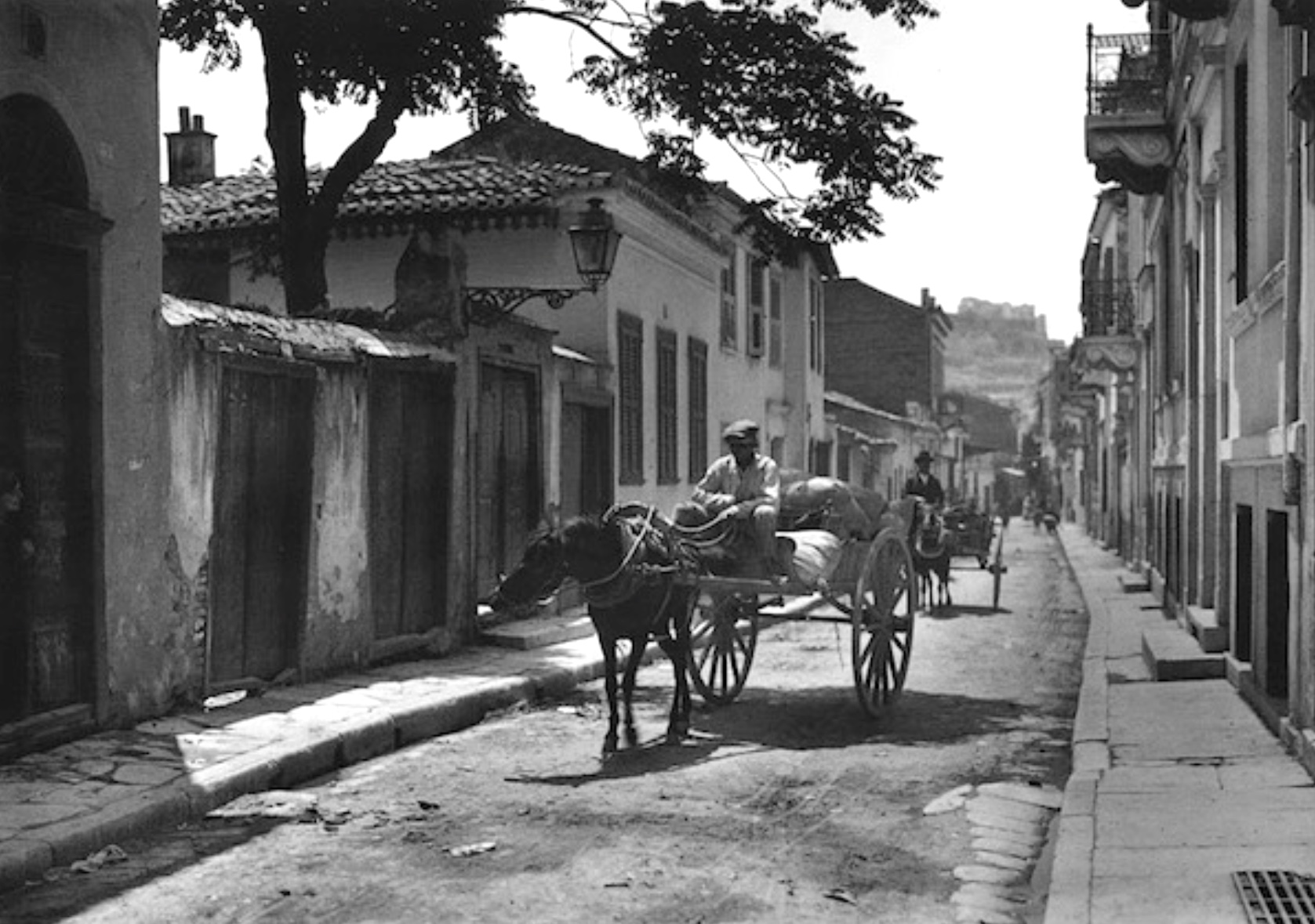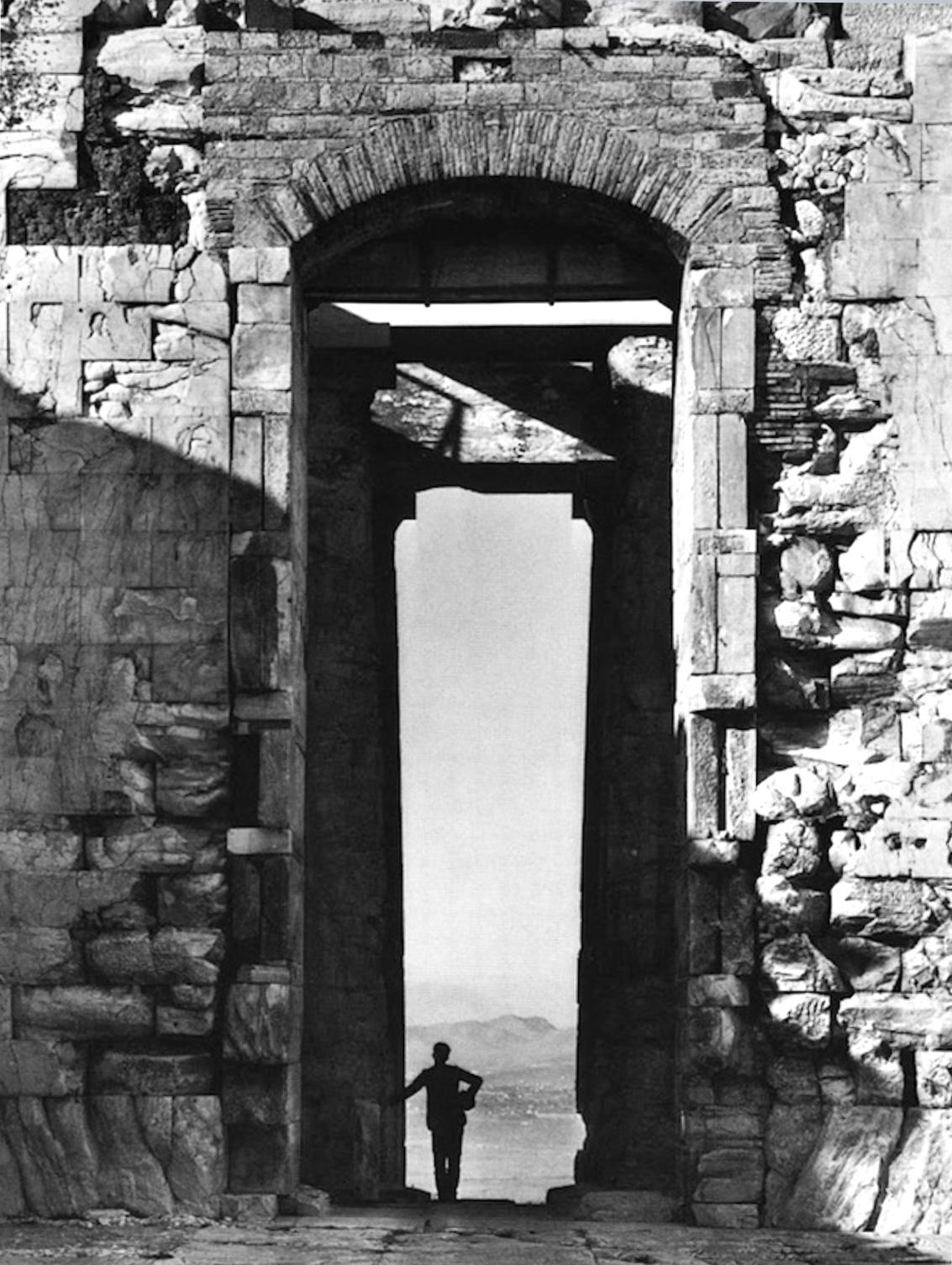Fred Boissonnas (18 June 1858 – 17 October 1946), a Swiss photographer from Geneva, made several trips to Greece between 1903 and 1933, documenting all aspects of the country using notes, drawings and especially photographs. He published 14 photo albums dedicated to Greece, many of which belong to the thematic series entitled L’image de la Grèce (The Image of Greece). He travelled around the country, visiting archeological sites as well as remote villages—the first foreign photographer to do so. His aim was to contribute to the identity of Greece in Europe.

Boissonnas persuaded the Greek authorities that his photographs would enhance the country’s political, commercial and touristic image abroad.

Looking at these pictures, one can be forgiven for asking, how?

Certainly, they are wonderful and picturesque daguerreotypes, but they portray a poor though beautiful country, where the traveler could hardly expect to find many comforts.


Cities with roads still unpaved.

Barefoot village children.

Unrestored antiquities.


Mostly small and unprepossessing houses.

Because the photos are in black and white, they cannot show the pure blue skies, the sunny landscapes.

The people in the photographs are unsmiling, being unused to posing, so the natural friendliness and hospitality of the Greeks is difficult to discern.

Also at the time people did not lounge on beaches in bikinis, getting a tan, so these are as far from contemporary travel photography as one can imagine.


However, they are a document of those years, and as such fascinating. The clothes, the landscapes with few signs of human intervention, the simplicity of life.


At the time the photos did serve the purpose of promoting Greece to foreigners, and Boissonnas was financially aided and personally supported by prime minister Eleftherios Venizelos, to whom his publications were dedicated. These were sent to all Greek embassies and the prominent political personalities of the era.



They do serve as a fascinating historical document. Hard to beleive so many still wore that traditional dress in their everyday lives at the time though. I suspect he persuaded them to dress up for his camera. 🙂
Best wishes, Pete.
LikeLiked by 2 people
Not at all. This is what they wore. And in some of the villages the traditional costumes are still worn for weddings etc. I went to one in Metsovo two years ago and the whole village turned up dressed like that (but ‘best’ clothes). It was wonderful.
LikeLiked by 2 people
Thanks, Marina, that’s interesting to know. 🙂
LikeLiked by 1 person
I love these photos. Great Post by M.L. Kappa
LikeLiked by 2 people
They are fascinating photos. I wonder how different they would look in colour, though there is something very atmospheric about b&w.
LikeLiked by 2 people
Photos taken here during the same period are similar in that no one smiles and poorer homes are small and dark. They don’t have the amazing scenery, antiquities and national dress, though. No wonder people wanted to go and see the reality.
LikeLiked by 1 person
What’s changed a lot too are the customs. Nobody at the time sunbathed or sat around on a beach, chilling!
LikeLiked by 1 person
I do love those black and white images. They really take you back to a different time
LikeLiked by 2 people
Incredible photographs – I see the men are wearing traditional dress, what are those “skirt” type things called? Was there a practical point to them? They remind me a bit of the doublet and hose that Tudor men used to wear in Britain.
LikeLiked by 2 people
Foustanella. Fousta means skirt. No idea how they came about, but it’s interesting, I’ll look it up! Now they’re a uniform for a certain type of guard.
LikeLiked by 1 person
Yes, I have seen those guards but I didnt realise it had been ordinary people’s dress too.
LikeLike
A fascinating post, Marina. I love the bridge photo especially. 🙂
LikeLiked by 2 people
It is beautiful. And it’s haunted in a way. I’ll do another post with the legend soon.
LikeLiked by 1 person
Wow!!!! Beyond words. Thank you for sharing the wonderful photos!!!
LikeLiked by 2 people
Treasures
LikeLiked by 2 people
Very interesting. It’s nice to have the possibility to see these photographies that show how much things changed through all these years.
LikeLiked by 1 person